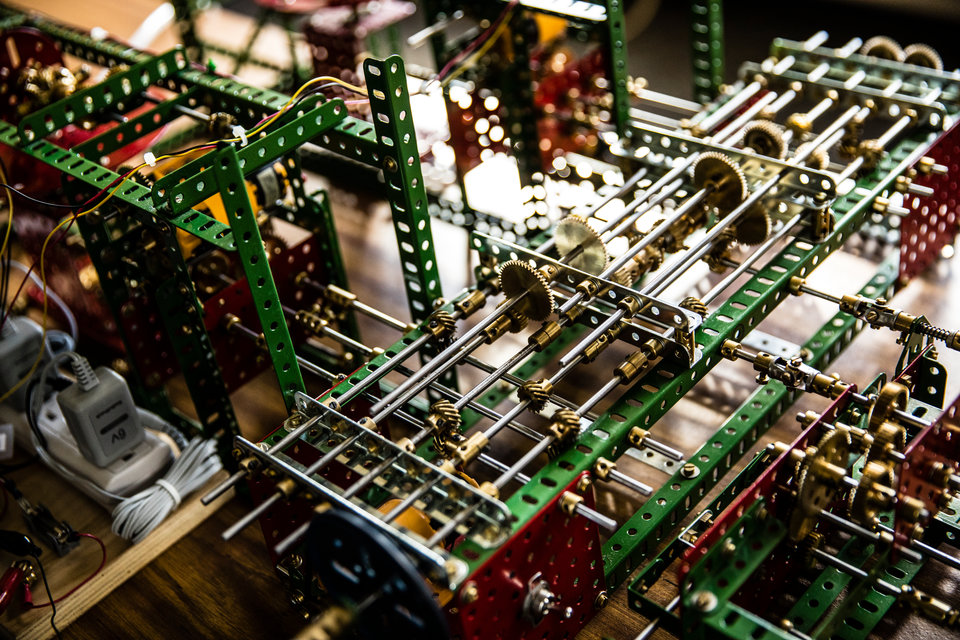You know your academic collaboration is going to be interesting when it kicks off with a screwdriver ceremony.
You know your academic collaboration is going to be interesting when it kicks off with a screwdriver ceremony. For junior Abby Sunberg, an applied mathematics major, it absolutely was.
Sunberg connected last year with Molly Peterson, director of the Mathematics Resource Center (MaRC) in the mathematics department, to work and do research with a differential analyzer, a large mathematical tool that can be used for calculus.
“It was cool to do math with my hands, basically,” Sunberg said. “It was really interesting to see these mathematical things in a mechanical way.”
Before we get any further on Sunberg and Peterson’s work with it, it’s worth explaining what exactly a differential analyzer is: “It’s like a precursor to the modern day computer. It’s a literal com-puter,” Sunberg said.

Abby Sunberg (left) and Molly Peterson
What it computes are differential equations, one of the building blocks of calculus. The machine itself is several feet long and features a series of discs, gears and rods that can be manipulated (by that all-important screwdriver) to solve and graph a function. Essentially, you program the analyzer to put a certain value going in to start; it spits back out the integration; puts that integration back in; and spits out a final, second integration, the value you’re looking for to complete the equation. That process is physically drawn by a pen hanging off the end of a rod, down onto a sheet of paper below.
No, it’s not the most efficient (it takes about 15 minutes to draw a full graph), but it’s extremely valuable in its visual representation of a process that is usually completely abstract, taking place inside the depths of modern-day calculators and computers.
“It’s super, super helpful. … If you can see it, it’s way more helpful to cement these ideas into their mind,” said Sunberg, who wrote a paper this summer on her research tied to the analyzer. “This was a great way to get my mind around how you get from point A to point B in different math concepts.”
The project is an extension of Peterson’s undergraduate work at Simpson College; she actually helped build it while she was there. She continued working with it through graduate school and – after bringing it to St. Thomas – connected Sunberg’s passion to a possible collaboration.
“We’ve kind of come full circle now with Abby working with it,” Peterson said.
For Sunberg, having a mentor in Peterson has meant having someone there to support her potential, both immediately and beyond. While showing their work Sunberg articulated just that to Peterson.
“I think you’ve been pushing me and are more cognizant of my future than I am. ‘If you want to do this, we can do this, this and this.’ You’ve been a great example of pushing me forward and making sure I have options for the future,” she said.
For more on the mathematics department and the MaRC's resources, visit their website.










